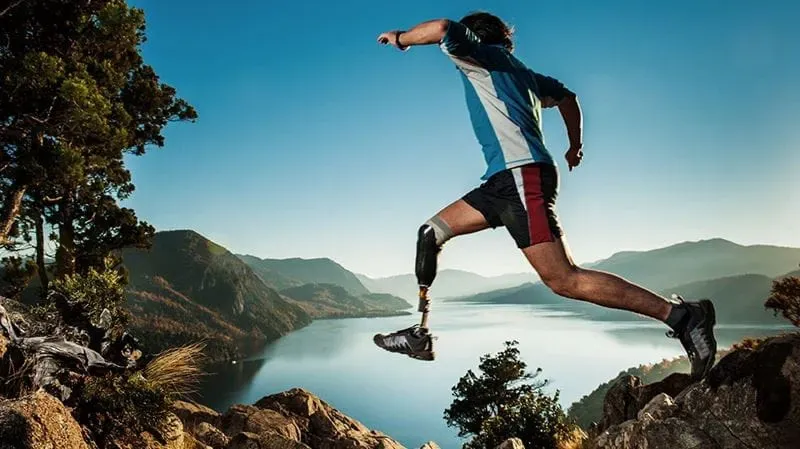No limits

A very unfortunate trend is that the incidences of limb loss are increasing. Forbes has stated there are between 10 and 15 million amputees in the world. According to the Amputee Coalition, nearly two million of these are in the United States, with approximately 185,000 amputations occurring each year. The main causes are vascular disease (54%) – including diabetes and peripheral arterial disease – trauma (45%) and cancer (less than 2%).
Prosthetics manufacturers focus on development of devices that provide the best quality of life possible for amputees. The needs of users vary depending on lifestyle. Older people may be satisfied with a simpler device, while others may require a complex prosthetic that allows them to fully participate in even the most extreme sporting activities and that as nearly as possible replicates a natural gait.
“Prosthetic performance, especially for complex devices, is improving at a rapid rate, and most prosthetics now incorporate a hydraulic system whereby the user can vary the damping force to help cushion shock loads,” says Jerry Zawada, Sales Engineer for healthcare and medical at Trelleborg Sealing Solutions. “More advanced systems use a microprocessor with some element of intelligent ‘learning’ to make adjustments when a prosthetic user is standing, walking, running or climbing stairs.”
One of the main challenges with advanced knee and ankle devices is the development of a robust sealing system for their hydraulic cylinders. “The sealing systems for the piston and rod in ankle devices are generally similar to those used in knees,” Zawada says. “However, performance is more difficult to achieve in the ankle than the knee because ankles are more compact, have a much shorter stroke, and must allow a degree of rotation. This makes side-loading more problematic.”
The cylinder needs a sealing system for both the piston and the rod. The piston must be sealed on the outside diameter to maximize the effectiveness of electronic valves, forcing the fluid through the piston valve in a controlled manner. Seal materials must be compatible with the lubricating fluid to ensure a long life for the prosthetic in a wide range of temperatures.
For most devices, engineers strive for a zero-leakage system, which can be difficult. In addition, bleed-down can occur during prolonged inactivity, such as when the prosthetic is sitting idle overnight. In this case, oil stuck on the piston slides down, creating a pool of oil on top of the outer seal. In addition, a balance of seal and lip load must be struck to seal in the hydraulic fluid without creating too much rod friction.
To avoid stick-slip, which can cause an impact shock to the prosthetic user, low-friction materials should be used. Adding a wear ring or two on the piston keeps the piston aligned properly during side loading. The seal and bearing materials must be selected to be compatible with the cylinder-bore material, surface finish and coatings to maximize cycle life.
The rod sealing system serves two distinct functions: it prevents external contamination from entering the system, and it keeps hydraulic fluids inside the cylinder. To achieve this, a complex configuration of multiple seals is required, with each seal performing a separate function to give the optimum performance in combination.
What’s the next step for prosthetics? “Every year there seems to be no limit to the technological advancements when it comes to new prosthetic designs and the sealing solutions behind them,” Zawada says. Futuristic versions of advanced prosthetics that have been seen in popular movies in recent decades are already a reality. “Electronic actuators as part of exoskeletons are helping to rehabilitate patients with limited mobility, due to a stroke, for example, enabling them to move when they cannot,” Zawada says. “Progress is also being made with bionic systems where limbs are connected to the body’s nervous system, allowing a user to control prosthetic movement just as they would their own limbs.”
For more information, please go to:
www.trelleborg.com/healthcare
This is an article has been reproduced from Trelleborg's T-Time magazine. To download the latest edition, go to: www.trelleborg.com/t-time